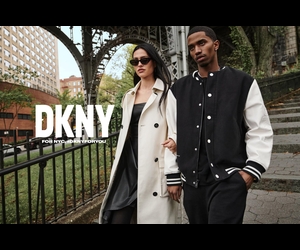No products in the cart.
Scott Burns: Crafting Stories with Voice and Vision

Scott Burns captivates audiences with his voice. He brought Bowser to life in Super Mario Sunshine. Now, he coaches aspiring voice actors. His work spans Nike, Amazon, and indie games. Additionally, he connects with fans at comic cons globally. His passion transforms scripts into stories. Consequently, Scott Burns leads with creative vision. In this feature, we explore his journey.
LISTEN TO THE FULL PODCAST EPISODE NOW
Beverly Hills Magazine: Welcome Scott Burns. It’s such an honor to be with you today. How are you?
Scott Burns: I’m well, thank you. It’s an honor to be with you as well.
Beverly Hills Magazine: I’m so glad. Let’s dive in, Scott Burns. What sparked your passion for voice acting?
Scott Burns: Watching too much television as a child, especially cartoons, sparked it. I remember watching The Flintstones and playing with a toy rock mobile, wishing I could voice Fred Flintstone. I worked on that. Then, watching The Andy Griffith Show, I mimicked Barney Fife’s whiny tone, even though it bothered me. My love for parody grew from there. It found me early.
Beverly Hills Magazine: Those childhood inspirations are like divine seeds, God-given talents we must follow. How did you land the iconic role of Bowser?
Scott Burns: Growing up on a farm in Eastern Washington, miles from neighbors, I created my own world. A Spokane radio station’s morning show host, Charlie Brown, fascinated me with his character voices. I didn’t know he pre-recorded them. That inspired my radio career, where I did character schtick, imitating what I heard before the internet, so it seemed original. My career took me to Seattle, where I replaced that same DJ I admired, which was ironic. My agent’s assistant, Tonya, found my character demo in a box of audition tapes and pushed me toward character work.
As video games emerged, I voiced kid games like Putt-Putt Joins the Parade as a fire truck and ice cream truck. Seattle was a hotbed for game developers, including Nintendo of America. They called me to audition for Super Mario Sunshine’s cinematic roles. They showed me Bowser, a new speaking character I hadn’t seen, saying he ruins Mario’s game at the end. For kids, they wanted him not too mean. I thought of Santa Claus with a growl: “Mario, how dare you disturb my family vacation!” That booked it. My 12-year-old son’s eyes lit up when I showed him the spec sheet. It was divine design—helped by knowing Wendy Wills, the studio manager at Bad Animals, who got me the audition.
Beverly Hills Magazine: The stars aligned with a Super Mario universe. How do you approach creating memorable characters? Is it instinctual, or do you do prep work and research?
Scott Burns: Research helps, like a character sketch or background. Bowser’s hunched posture guided me. I assume the character’s physicality and facial expressions, like a lantern-jawed villain. A trick from voice actor Pat Fraley, whom I met in 1981, is to voice inanimate objects, like a chair complaining about being sat on. You walk around, talking aloud to find the character’s conversational tone or laugh, which isn’t always in the script.
Improv, learned from Gary Austin of The Groundlings, helps too. It took years to stop chasing punchlines. Gary said I was doing “that radio thing,” trying to be funny. One day, I just listened and reacted, sitting still if needed. That was magic—things got laughs without trying. Sadly, Gary passed from blood cancer in 2012 before I fully got it.
Beverly Hills Magazine: As artists, we’re always evolving, learning to express differently. What’s the biggest challenge in voice acting today?
Scott Burns: The industry’s oversaturated, but the real challenge is internal. It’s easy to blame AI or external factors for not working, but work exists if you focus on what you love. I thought I’d aged out of video game roles after moving to Las Vegas from Seattle’s game hub. But months ago, my Atlanta agent sent an audition with complex non-disclosure forms and specific ethnicities. I almost skipped it, lacking bandwidth, but saw a “Southern male, 50 years old” role, threw in a tape, and booked it. They flew me to Los Angeles for recording, a dream job with strict privacy—no lobby photos, even an Uncle Sam NDA sign. You can’t force it; let opportunities come.
Beverly Hills Magazine: That’s like letting go and letting God, as a Christian I like to say. Prayer opens doors. How do you coach aspiring voice actors effectively? Is it tailored to their talent, or is there a method?
Scott Burns: I got into coaching in Seattle when a former agent asked me to take over her intro voiceover class after the instructor became a studio manager. I hesitated, fearing the “those who can’t do, teach” stigma, but I was a working voice actor and demo producer. I agreed to a six-week course, developing a curriculum covering commercials, narration, and characters, based on my ad agency experience as an audio production manager directing talent.
I loved it—directing people is the best of both worlds. Zoom made coaching easier from home. I take students where they are, building on their talents, avoiding the counterproductive tear-down approach. One engineer student, not cut out for it, loved the bonding in group sessions. Some formed library workout groups after class, which was rewarding.
Beverly Hills Magazine: It’s about mentoring the next generation with purpose. What makes a voiceover demo stand out? Is it actual work, or do you create clips?
Scott Burns: A demo should show your range and acting ability, sounding like real work. In the past, demos used booked jobs, but now we create clips to sound professional, like they’re off the air. I use Universal Production Music for authentic commercial sound. Lead with your best clip, then contrast it with something different, like a movie trailer with chase, buddy, and love scenes. Keep it dynamic, not one-note. Demos used to be four minutes, then a minute and a half. Now, in Los Angeles, they’re 30–40 seconds to grab busy producers’ attention on their phones.
Beverly Hills Magazine: Scott Burns, your journey from childhood cartoons to Bowser and mentoring others is truly inspiring. Thank you for sharing your passion and wisdom.
Scott Burns: Thank you, Beverly Hills Magazine, for this platform. I’m grateful to share my story and guide aspiring voice actors.
Scott Burns redefines voice acting with artistry. His coaching empowers the next generation. Moreover, his performances inspire global audiences. By blending creativity and mentorship, he drives impact. Ultimately, Scott Burns’ legacy resonates through unforgettable stories. His work invites bold exploration. Connect with his craft for inspiration.

















Leave a Reply